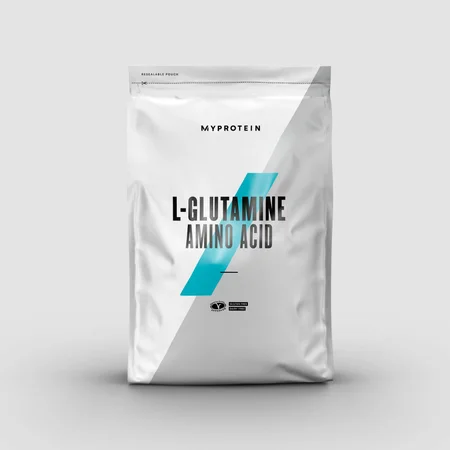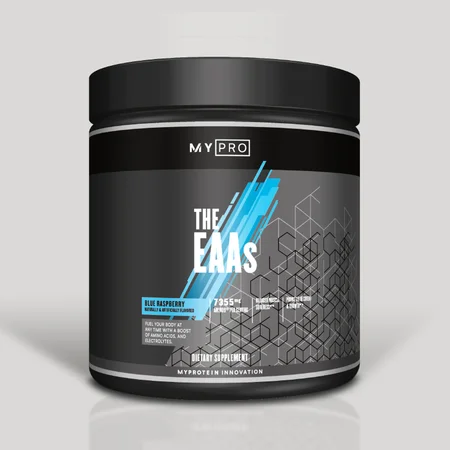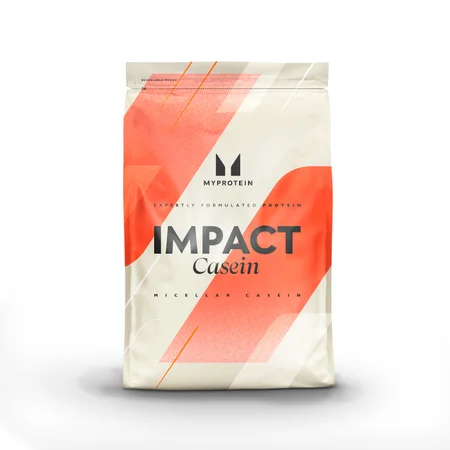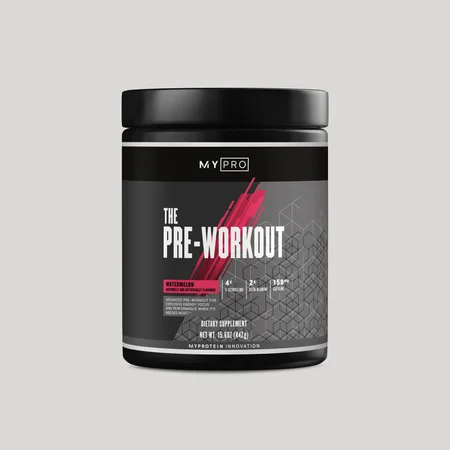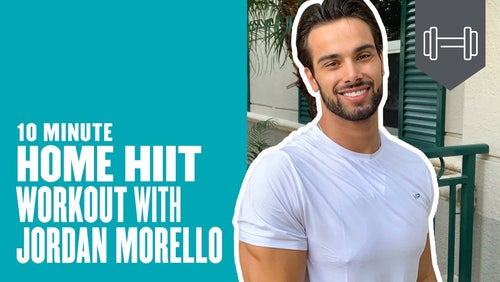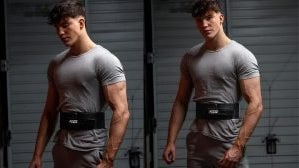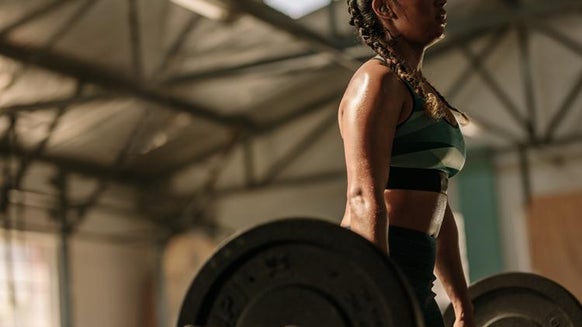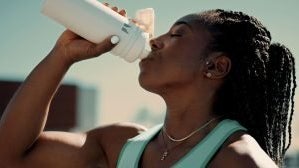Functional Fitness Training Exercises For Your Everyday Workout
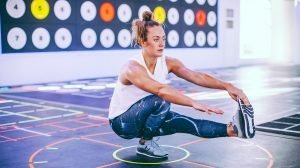
With a lot of people jumping on the fitness bandwagon with the goal of getting absolutely #shredded, it’s easy to forget what the main benefit of exercise is. Exercise is great for maintaining general health and fitness and overall quality of life.
One of the best forms of exercise for these things — and one that is at the forefront of my fitness coaching — is functional fitness. For people short on time, this form of exercise provides the chance of a healthy, active lifestyle. Its focus is preparing the body for everyday activities and requires no need to worry about training splits or precise macronutrient timings.
What is Functional Fitness?
Functional fitness focuses on building a body capable of carrying out real-life activities in real-life positions. Functional fitness exercises are designed to mimic movements you might make at home, work or when playing sports and trains muscles to work together.
Everyday tasks are made easier by incorporating movements like squatting, reaching, pulling and lifting, and these exercises make up functional fitness training routines.
Benefits of Functional Fitness
Improves Everyday Life
By improving the overall function of your body and improving muscle strength and endurance, everyday activities are completed with much more ease. It can also improve overall quality of life by reducing the stress of carrying out these everyday tasks.
Muscle Memory
Some of the best benefits of functional fitness include greater muscle memory. The more you perform a movement, the better you get at repeating similar movements.
Increased Mobility
Functional fitness can help improve your coordination, balance, flexibility, muscle strength and agility, which all contribute to being more mobile in day-to-day life.
Improves Balance
As functional fitness training often requires multiple muscle groups working together, overall strength and balance will improve.
Reduces Risk of Injury & Improves General Health
Along with improving muscle and ligament strength by mimicking daily movement patterns, you will often notice an increase in overall fitness levels, which can lower the risk of injury and increase overall health.
Can Help with Joint Pain
Functional fitness is often great for people who suffer from regular back, muscle and joint pain as it can reduce stiffness and improve joint function.
Low Impact
Because most functional training plans use exercises that are low impact, it’s great for people of all fitness levels as well as accessible to those who suffer from joint pain.

Functional Fitness Training Exercises
The main movement patterns involved in Functional Fitness Training are: squats, bending, lunges core, push, and pull.
Squats
Movement Pattern: Squats
The humble squat. When you think about it from a functional perspective, your ability to squat is what allows you to sit in a chair, to get up off the toilet, to bend down to pick up your child. The list is endless …
So, you could say it’s an important exercise to master.
Muscles Worked:
The obvious muscles targeted are in the lower body; however, in order to do this compound exercise correctly, you also need to use several muscles above the waist, including the rectus abdominis, obliques, transverse abdominis and erector spinae, AKA the core muscles.
The lower muscles targeted in a squat include the:
- Gluteus maximus, medius and minimus (glutes)
- Quadriceps (quads; front of thigh)
- Hamstrings (back of thigh)
- Adductors (groin)
- Hip flexors
- Calves
How to:
- Start with feet slightly wider than hip-width apart, toes turned slightly out.
- Keeping your chest up and out and the pressure even in your feet, engage your abdominals and shift your weight back into your heels as you push your hips back.
- Lower yourself into a squat until either your heels begin to lift off the floor, or until your torso begins to round or flex forward. Your depth should be decided by your form.
- Keep your chest out and core tight as you push through your heels to stand back up to your starting position. Squeeze your glutes at the top.
- Alternatively, you can make this increase the difficulty by adding dumbbells or a barbell.
Deadlifts
Movement Pattern: Bending
Bending is another important movement pattern needed in our everyday lives. Every time we bend down to pick something up off the ground, we are recruiting quite a lot of muscle groups to do so, therefore it is important to keep them strong. The most popular bend exercise is the deadlift. It involves flexing at the hip while maintaining rigidity at the knees.
Muscles Worked:
- Glutes
- Lower back
- Quads
- Hamstrings
- Adductors
- Trapezius
- Forearm flexors
How to:
- Step up close to the bar so that it is positioned about over the middle of your feet.
- Bend over and grip the bar with hands about shoulder-width apart.
- Inhale, brace your core, and lift the bar by extending your hips and knees.
- Pull the bar close to your body until you are standing straight up, with hips and knees locked out.
- Lower the bar back to the ground.
- If your new to deadlifts, you can practise this movement with dumbbells or a sweeping brush to get used to the movement pattern before advancing to a barbell.
Step-Ups
Movement Pattern: Lunges
The lunge is a support pattern for the squat and bend, requiring active stabilisation in both the core and the extended leg. In daily life, you use the lunge whenever you walk up a stairs or climb a mountain.
Muscles Worked:
- Glutes
- Quads
- Hamstrings
- Adductors
- Calves
How to:
The best way to learn how to do the step-up with proper form is to split the exercise into three parts: set up, step up, and descend.
- Set Up: stand 8 to 12 inches in front of a box, bench, or other stable surface that’s about knee-height. Keep your chest up, then step your left foot onto the box.
- Step Up: keeping your weight on your left foot, push through your left heel to fully straighten your left leg. Don’t swing your arms or lean too far forward: this creates momentum and makes the exercise easier and thus less effective.
- Descend: While keeping your chest up and your arms at your sides, lower your right foot toward the floor and return to the starting position. This is a mirror image of what you did during the step up.
Don’t let your body fall back to the starting position or try to lower yourself slowly — the entire descent should be controlled but only take about a second.
Once you’ve completed the desired number of reps, switch sides and repeat the process with your right leg.
Alternatively, you can make this exercise more difficult by adding dumbbells or a barbell.
Plank
Movement Pattern: Core
The core is a complex series of muscles broadly considered to be the torso (everything below the arms and above the legs). Its main function is to stabilise the spine in static and dynamic movements. You use your core in most daily activities. You use your core muscles to stabilise yourself in any upright movement patterns.
Muscles Worked:
- Trapezius (traps)
- Rhomboid major and minor
- Latissimus dorsi
- Pectorals (chest muscles)
- Serratus anterior
- Deltoids
- Biceps and triceps
How to:
Plank from Knee (Level: Beginners)
- Lie on the floor with your elbows under your shoulders, hands flat beside you and core engaged.
- Keeping your forearms and knees on the floor slowly raise yourself upwards until your body is in a straight line from your knees to your head.
- Hold the position for as long as you can. Don’t worry if your ab muscles start shaking. This is a sign that you are working your abs.
Full Plank (Level: Intermediate)
- Start in a press-up position.
- Bend your elbows until your forearms are on the floor beneath your shoulders so your body is in a straight line from your feet to your head.
- Keep your abs tight and look at the space between your hands to ensure a neutral spine position.
- Hold the position for as long as you can.

Press-Ups
Movement Pattern: Push
The push pattern is any movement where you push a load away from yourself or push your own body weight away. In daily life, the push takes place when you open doors or return to standing position from lying face down.
Muscles Worked:
- Shoulders
- Triceps
- Pectorals (chest muscles)
How to:
- To do a push-up you are going to get on the floor on all fours, positioning your hands slightly wider than your shoulders. Don't lock out the elbows; keep them slightly bent. Extend your legs back so you are balanced on your hands and toes, your feet hip-width apart. Contract your abs and tighten your core by pulling your belly button toward your spine.
- Inhale as you slowly bend your elbows and lower yourself to the floor, until your elbows are at a 90-degree angle.
- Exhale while contracting your chest muscles and pushing back up through your hands, returning to the start position.
- Keep a tight core throughout the entire push-up. Also, keep your body in a straight line from head to toe without sagging in the middle or arching your back. Option to be on your knees if you are only a beginner or alternatively you can perform this movement against a wall.
Bent-Over Rows
Movement Pattern: Pull
The pull movement entails you pulling a load towards you or pulling your own bodyweight. This movement pattern is seen in everyday life when you pick up the rubbish bin out of the trash can.
Muscles Worked:
- Latissimus dorsi (lats; the large wing-like muscles in your back)
- Middle and lower traps
- Rhomboids
- Posterior Deltoids
How to:
- Hold onto a barbell with your palms facing down. Bend your knees slightly and bend forward at the waist while keeping your back straight. It should be almost parallel with the floor. The barbell should be directly in front of you; your arms should be perpendicular to the floor. This is the starting position.
- While keeping your torso still, lift the barbell toward you. Your elbows should be kept close to your body. Use only your forearms to hold the weight. When you get to the top, squeeze your back muscles and hold for a few seconds.
- Slowly lower the barbell back to the starting position.
- Repeat the process for the number of repetitions in your workout routine.
You can practise this movement with dumbbells or a sweeping brush to get used to the movement pattern before advancing to the barbell.
Take Home Message
Whether you are an athlete wishing to improve strength and endurance for your desired sport, a busy parent who just wants to move more and have more energy to play with the kids, or a hardcore gym buff, these functional fitness exercises should be included in your training programme.
Including functional fitness exercises in your routine can deliver improvements in strength, fitness, flexibility, and mobility, and you may find everyday activities are that little bit easier to carry out.
Want more Myprotein?
READ MORE HERE:
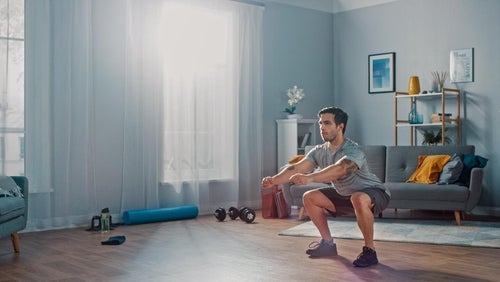
4 Bodyweight Workouts to Build Muscle | 15 Essential Exercises at Home
No gym equipment needed for this bodyweight workouts - give them your best.


